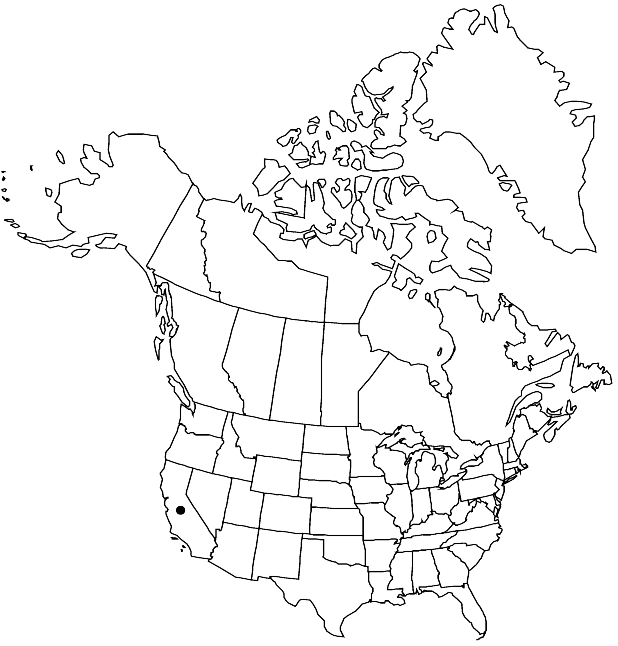Caulanthus amplexicaulis
Proc. Amer. Acad. Arts 17: 364. 1882.
Annuals; glabrous throughout. Stems erect, unbranched or branched distally, 0.4–11 dm. Basal leaves rosulate; petiole 0.5–3 cm; blade obovate to broadly oblanceolate, 1–7 cm × 5–37 mm, margins coarsely dentate. Cauline leaves (median) sessile; blade oblong to broadly ovate or obovate, 2–8 cm × 10–40 mm (smaller distally, base amplexicaul), margins coarsely dentate or entire. Racemes (lax), without a terminal cluster of sterile flowers. Fruiting pedicels divaricate to ascending, 2.5–19 mm. Flowers: sepals erect, (dark maroon-purple or ochroleucous to yellowish), ovate to ovate-lanceolate, 4–9.2 × 2–4 mm (equal); petals (abaxial pair) usually stramineous to yellowish green, rarely pale purple, (adaxial pair) purple, (slightly longer), 10–18 mm, blade 4–10 × 0.5–1.5mm, crisped, claw narrowly oblong-oblanceolate, 6–10 × 1–3 mm; filaments in 3 unequal pairs, abaxial pair 3–7 mm, lateral pair 1–5 mm, adaxial pair 4.5–9 mm; anthers oblong, unequal, 1–3.5 mm (adaxial pair smaller). Fruits divaricate to ascending (often distinctly curved), terete or slightly latiseptate, 4.5–14(–16.7) cm × 1–1.5 mm; valves each with obscure midvein; ovules 40–92 per ovary; style 0–0.4 mm; stigma subentire. Seeds 1.4–2.2 × 0.9–1.2 mm. 2n = 28.
Phenology: Flowering Apr–Jul(-Aug).
Habitat: Chaparral, montane forests, serpentine areas, granitic and shale scree
Elevation: 800-2900 m
Discussion
Caulanthus amplexicaulis is known from Los Angeles, San Bernardino, Santa Barbara, and Ventura counties. The serpentine populations of Santa Barbara County have sepals that are ochroleucous to yellowish instead of the dark maroon ones found elsewhere in the species range. They were recognized by R. C. Rollins (1993) and R. E. Buck (1995) as var. barbarae. Both vars. barbarae and amplexicaulis form a distinct monophyletic clade but they are without reproductive barriers (A. E. Pepper and L. E. Norwood 2001). Some other species of Caulanthus show comparable or even greater variation in sepal color, and it might be more practical to treat var. barbarae as a color form.
